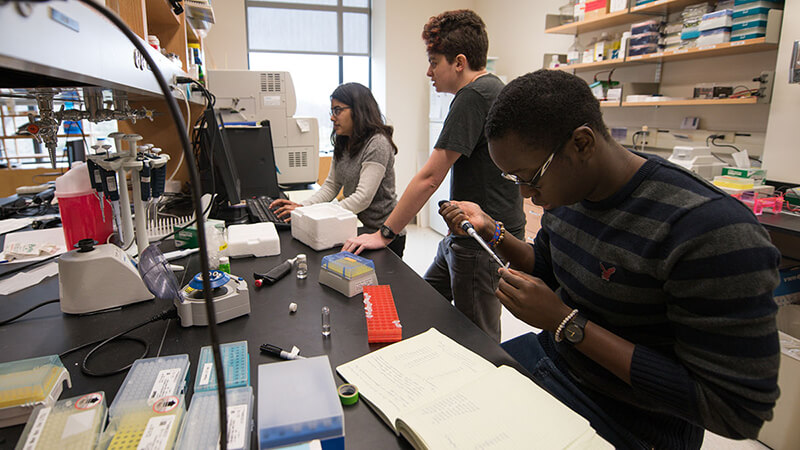The latest data on college enrollment recalls an observation once made about changing social conditions in general. Improvement doesn’t mean perfection, the late Hans Robling wrote: The state of the world can be both bad and better at the same time.
That’s where we are today. Enrollment is still down more than a million students from before the pandemic, and well behind the enrollment peaks seen a decade ago. But the latest figures from the National Student Clearinghouse show a glimmer of hope: The number of freshmen enrolled in spring 2023 rose 9.2 percent from last year, most of those in community colleges.
So it is bad but (slightly) better, at least in one respect. Still, it might be more helpful to regard this as we would a barometer reading. More important than the number itself is how it is changing—toward higher pressure and clearing skies, or low pressure and storms.
I’m not a forecaster, but to the extent higher education is changing—and by the way, helping lift millions of Americans to financial security, growing our competitive capacity in a global economy, and helping assure a future for our democratic ideals—it’s because many schools are revising and retooling to better serve students and their local communities.
This happens in many different types of institutions—local community colleges, regional public universities, as well as in some of the best-known names in higher education. I recently spoke about this with colleagues at Oberlin College and Conservatory, a nationally-regarded institution of about 3,000 students near Cleveland. Oberlin faces the same challenges as many other liberal arts colleges. But it has not been static in its approach.
Oberlin’s applications have exceeded 10,000 each of the last three years, an important benchmark for the school. Its first-year orientation includes a day of service in Cleveland in which students work with nonprofit organizations to provide support and help students see the connection with their neighbors.
Oberlin President Carmen Ambar, a board member of Lumina Foundation, took office six years ago and talks about the value of “engaged liberal arts,” including community partnerships, internships, fellowships, and other hands-on programs.
Oberlin’s Internship Plus plan provides a stipend to help students gain valuable experience in the workplace. The school also has revamped its career education efforts. And the Board and senior leadership have worked closely together to develop the One Oberlin plan that has put it on a better path financially.
In fact, higher ed innovation is happening across the country, and that is important not just for these schools and their students, but for all of us. We have known for a long time that people without education beyond high school earn less than degree-holders and are more likely to be unemployed and live in poverty. We also know they’re more prone to depression, divorce more frequently, and even live shorter lives.
I’ve frequently mentioned in my meetings with policymakers, business leaders, and higher ed officials that despite the long-term decline in enrollments, there continues to be high demand for and interest in college, as a Gallup and Lumina Foundation study last year showed.
Many people, however, feel they can neither access nor afford it. Students told Gallup they recognize the value of college degrees but are worried about finances, feel unprepared academically, and struggle with stress along with heavy work and family obligations. In response, colleges and universities are expanding their student supports—the advising and other services that help people stay in school and complete their degrees.
President Ambar says institutions like Oberlin need to be in the business of “preparing people for human work and human life.” We know that work is changing in unprecedented ways as technology and artificial intelligence take on more of the tasks that people used to do. And the result is a new emphasis on creativity, critical thinking, and problem solving that only humans can do.
Rather than the “soft skills” we hear about so often, I think of these as durable skills, since employers have told us so many times that these are the qualities they are looking for. In fact, a survey by the American Association of Colleges and Universities found that at least half of employers say liberal arts degrees convey “very important” job skills.
And increasingly, students need not make an either-or choice when it comes to the humanities or STEM courses. In yet another convergence of market demand and technology, small liberal arts colleges are increasingly “course sharing” with larger institutions, to provide students with expanded offerings via streaming technology.
“It’s an incredible thing to polish a liberal arts resume to say, ‘Sure I’m an English major but look what else I’ve got,’” Brandon Busteed of Kaplan University Partners told The Hechinger Report.
We see variations of this idea in many places, and it’s likely to be one of higher ed’s selling points going forward. Schools that can produce graduates with specific skills who are also generally educated and can genuinely show that their grads have adaptable work and life skills are more likely to attract both students and resources.
It’s too early to tell how much this is helping slow or reverse the declines in enrollment—what direction the barometer is moving, you might say. But from here, as we see these schools adapting, the skies are just a little brighter than a year ago.
